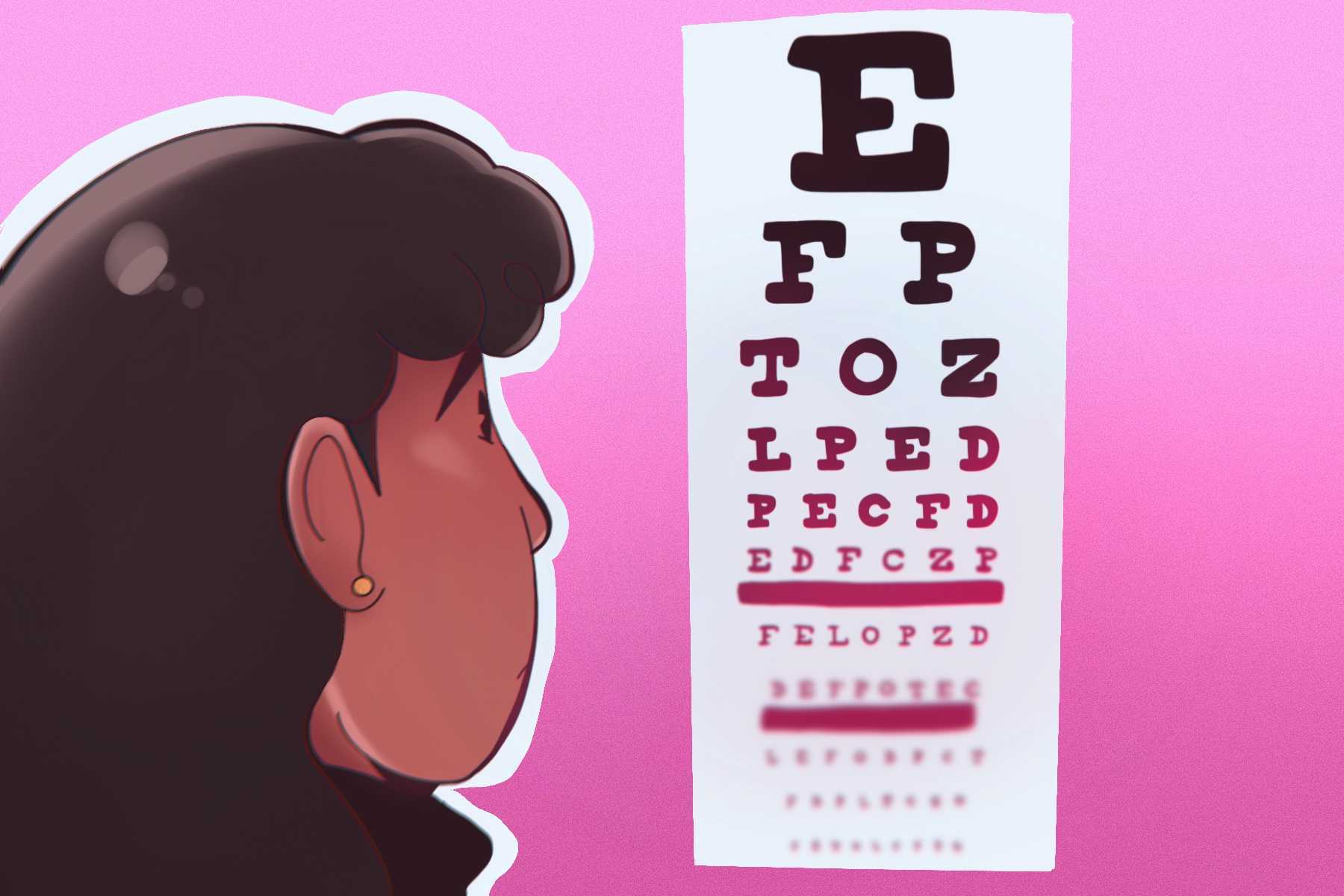Recently, college students have begun returning to campuses after the COVID-19 pandemic forced classes to move online through apps like Zoom, Skype and WebEx. Even with this return to form, electronics remain as integral to students’ everyday routines as ever before. Educators use websites like Blackboard and Canvas to deliver easily accessible assignments, while eBooks and free online databases provide helpful alternatives to overpriced textbooks. The shift to digital education produced numerous conveniences for students and teachers alike. However, the countless hours spent on electronic devices for both coursework and entertainment lead to the unhealthy side effect of eye strain among college students. Although the onset of eye strain may seem inevitable given the necessity of computers in most courses, there are multiple easy ways to alleviate and even prevent it without sacrificing time or efficiency.
Addressing the Effects of Screen Usage
Screen-related eye strain, often labeled by optometrists as “Computer Vision Syndrome” (CVS) or “Digital Eye Strain” (DES), is a surprisingly common condition. The COVID-19 pandemic played a large role in this, as a study from March 2021 found that 88% of device users suffer from DES. In contrast, a 2018 article claimed that just over 50% of people experience eye strain on a regular basis. Both statistics are disconcertingly high, but the continuous increase presents a worrying sign for the future.
Despite this ubiquity, few people know exactly what makes computer screens so harmful to the eyes. As explained by an article from the SAS Journal of Medicine, our eyes struggle to focus on digital screens more so than on printed text. Unlike the dense, defined edges of print, computers form letters and images through pixels that are brightest in their center. The intensity of this light often drives our eyes to unconsciously move toward more relaxed positions. Trying to stay focused on digital text places constant pressure on the muscles that move the eyes, eventually developing into eye strain after an extensive period of time. Similar studies also demonstrate that we blink less often while staring at screens, which further dries up and damages the eyes. While people with healthy eyesight are susceptible to eye strain, an article by Troy Bedinghaus states that the condition is far more severe in people with preexisting eye problems.
Thankfully, most of the solutions for treating and preventing DES require very little time and effort. One of the simplest means of preventing eye strain is to adjust a computer or phone’s display settings to reduce physical discomfort. Lowering the screen brightness and increasing font size eases the pressure on the eye muscles. Similarly, adjusting the screen contrast and refresh rate prevents flickering and other visual effects that incite discomfort. Besides the screen settings, environmental work conditions like intense screen glare or poor room lighting contribute to the severity of eye strain when using devices. Finally, keeping the screen about 20 centimeters below eye level and an arm’s length away from your face help keep your eyes in a relaxed position while you work.
Aside from the short-term symptoms of eye strain, extended use of digital screens may increase the risk of permanent damage or disease. LED monitors produce “high energy visible” (HEV) light, commonly known as “blue light,” which contains only slightly less energy than harmful UV rays. Unlike UV rays, blue light can easily enter the retina, which raises concerns about the potential damage caused by prolonged exposure. Studies published in Molecular Vision and the International Journal of Ophthalmology describe how blue light can weaken the eye and increase the chances of age-related macular degeneration and cataracts, both prominent causes of blindness in old age. Another article from the Journal of Cosmetic Dermatology describes how high amounts of blue light inflict similar damage on skin cells and tissue.
It’s worth noting that blue light isn’t inherently harmful, as people are exposed to it on a regular basis through natural sunlight. According to Healthline, daytime exposure to blue light increases cognitive function, thereby improving your memory and alertness. However, these effects become harmful at night by disrupting your circadian rhythm, or “sleep-wake cycle,” sometimes leading to insomnia. An article in Scientific Reports links the severity of this disruption to higher screen brightness. Because of this, device users should avoid using bright screens at night, or at least lower their brightness settings if necessary.
Research into the damage inflicted by blue light exposure has yet to reach a decisive conclusion, but the potential risks make it worth finding alternatives to electronic devices, such as physical notebooks, flashcards and textbooks. If electronics are required, however, the 20-20-20 rule (look away from the screen every 20 minutes at something 20 feet away for 20 seconds) is a highly recommended and effective practice for preventing eye strain. Blue light glasses are also available at various retailers, though studies into their effectiveness are just as inconclusive as those on blue light itself. Regardless, finding a balance between screen use and eye rest is essential to staying on top of coursework without suffering from eye strain or other severe symptoms.
Ways Colleges and Professors Can Assist
The negative impact of eye strain on student performance and well-being raises questions on how colleges and professors can aid in the prevention of DES aside from assigning less work. While most college students certainly wouldn’t mind this approach, there are a few possible ways for educators to help reduce DES cases without changing their course schedules. A simple solution would be to reintroduce paper handouts as a regular part of classes. Physical tests and study guides allow students to work on courses without prolonged exposure to digital screens. Replacing the sources of eye strain and blue light will likely help students feel better and improve their academic performance. An article by Michele Willens of The Atlantic supports this possibility, citing multiple studies and interviews that showed students prepared more for in-person tests than online tests, leading to overall better grades in the former.
Despite the advantages it may bring, colleges are unlikely to move away from their current online format. Digitally submitted assignments are much easier to organize and cost far less than paper. Furthermore, allowing for work to be submitted online benefits students with hectic schedules who may not be able to attend every class. The online medium also includes automatically graded assignments, allowing students to receive feedback immediately after submitting their work and saving plenty of time for the professors.
Rather than altering their teaching methods, colleges could help students by raising awareness of the common causes of eye strain. This idea was tested by a study published in the American Journal of Nursing Research, which saw a decrease in DES symptoms among device users that had interacted with an educational program that discussed means of remedying eye strain. If more schools adopted similar informational tools to raise awareness of the preventive measures against DES, students might improve both their academic performance and chances of success.
Conclusion
Eye strain grew into a prominent issue for college students due to a lack of awareness of how to prevent it. While many have felt the symptoms of DES, most don’t know of its causes or ways to counteract it. As such, the best way for colleges to help students is by raising awareness of the simple means of preventing eye strain. Likewise, students should organize their workspace and adjust their screens to create comfortable conditions for their eyes and try to avoid using electronic screens for prolonged periods of time (especially at night). Considering how little time is afforded by the college schedule, this is understandably a difficult task. However, taking these measures will not only prevent future vision problems in students, but also help them to stay efficient and focused during their hectic courses.

















